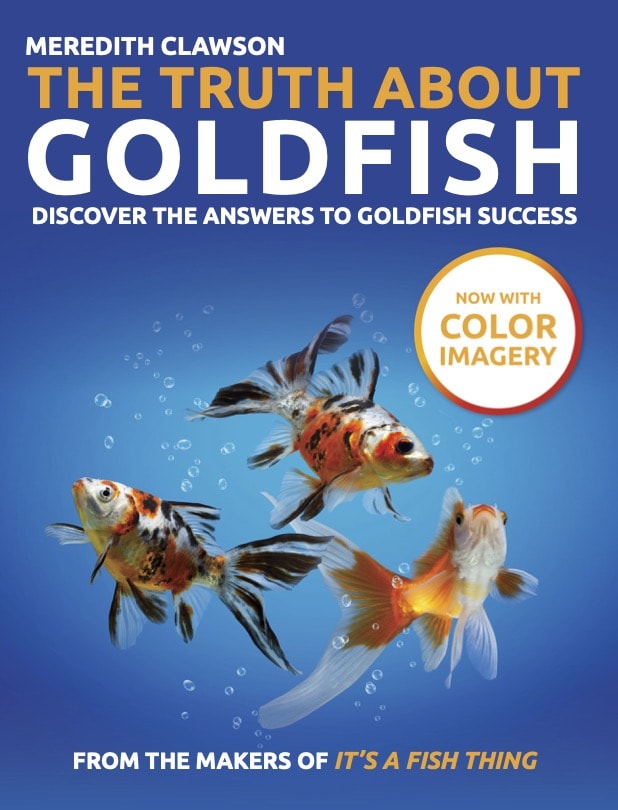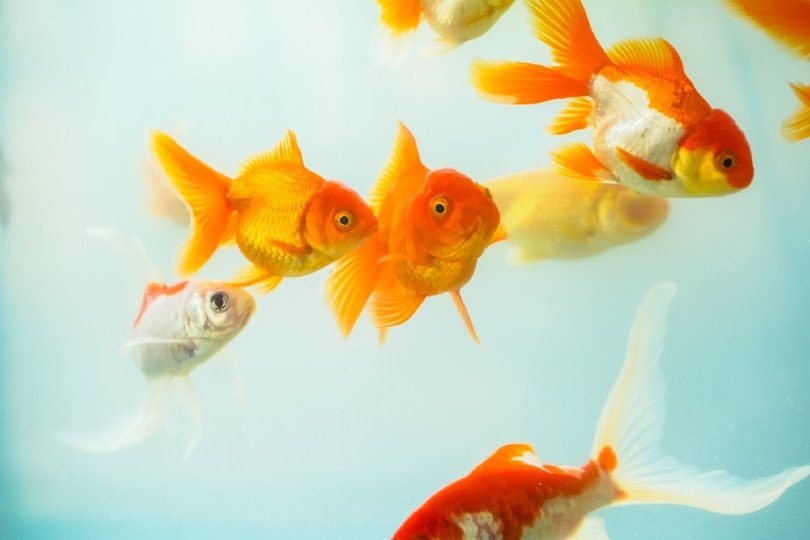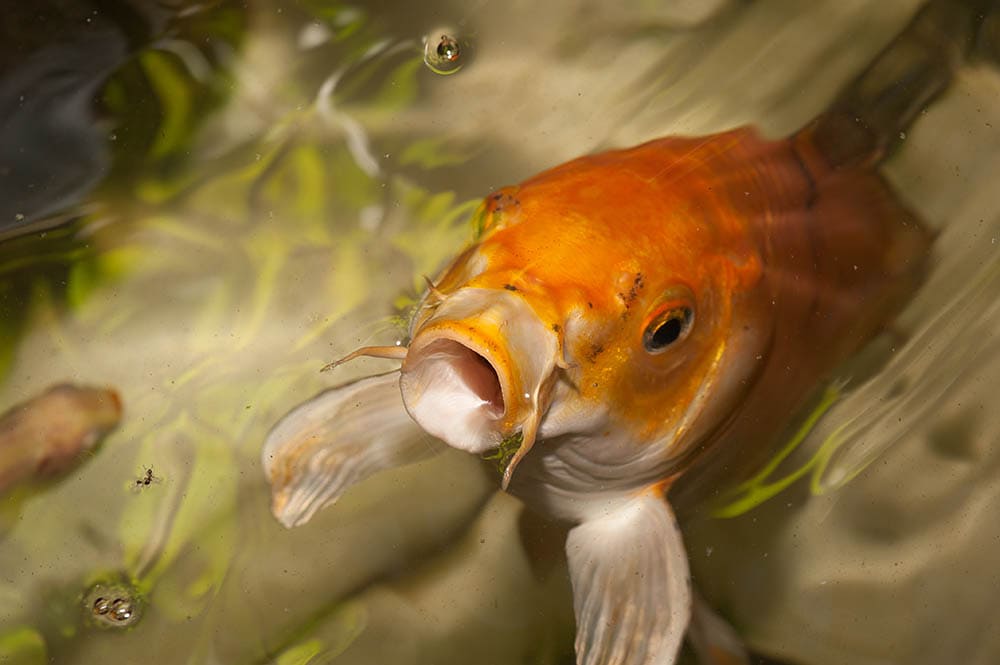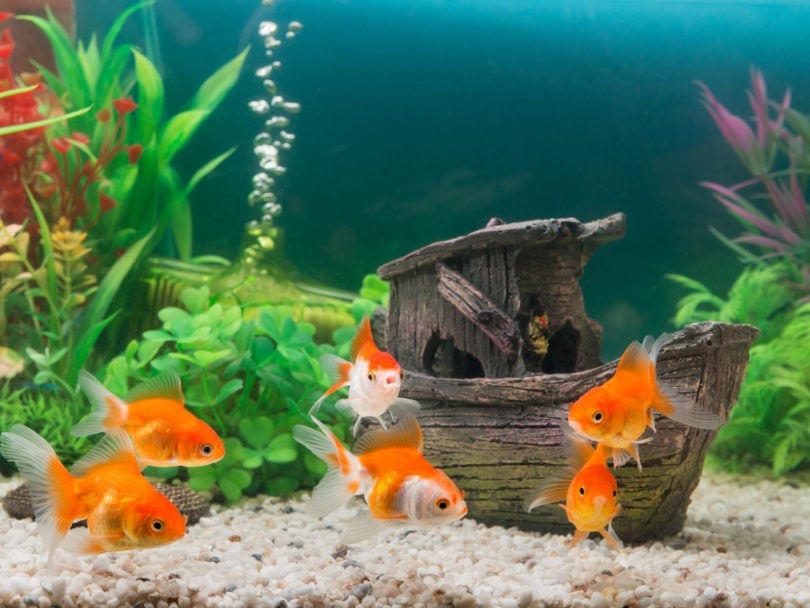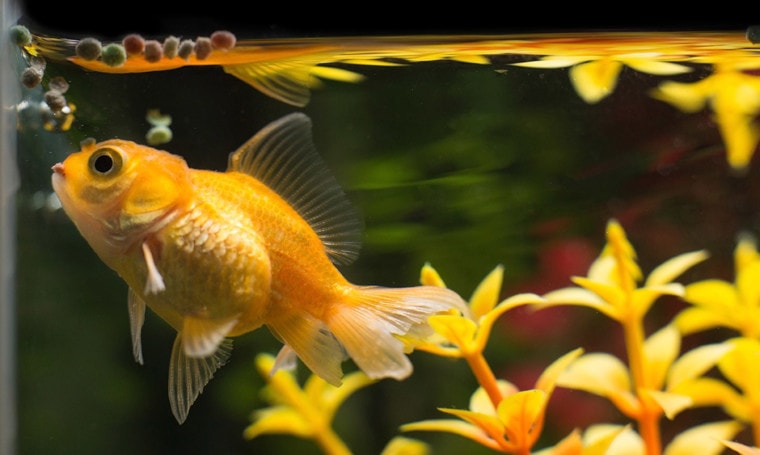
Goldfish can live for decades with proper care. Of course, this requires proper tank cleaning and maintenance, monitoring for diseases and health changes, providing clean water, and ensuring your goldfish has an overall enriching environment. One of the most important aspects that is frequently overlooked, though, is diet.
Goldfish require a more varied diet than you might realize, and they can eat tons of different foods. Knowing how to balance your goldfish’s diet between necessities, basics, and treats will help you ensure your goldfish will be with you for years to come. Let’s dive right into the best diet to keep your goldfish healthy.
Can’t I Just Feed My Goldfish Fish Food Flakes?
The simplest answer to this is “yes”, and you’ll almost certainly encounter someone who kept their goldfish alive on nothing but the same brand of flakes for 20 years. There are a few reasons why that isn’t ideal and won’t work for all goldfish. In reference to fish food flakes specifically, these foods contain a lower nutrient density and more fillers than most other types of fish foods. Pellets and bars tend to have a higher nutrient density than flakes, and they are less likely to disintegrate quickly and foul the water.

Basic Nutrition
Commercial fish foods are made with nutrition basics in mind. This means they are formulated to meet the basic needs of maintaining life, and little else. To put this into perspective, imagine we’re talking about feeding a dog. Some people feed their dog the same kibble its entire life, but the majority of dog owners feed based on life stage, because puppies, adults, seniors, underweight, overweight, and active dogs all have different nutritional needs.
In addition to kibble, you may also give your dog a vitamin or joint supplement. You likely give treats, whether it’s multiple times per day or on occasion. Your dog might like to sneak veggies from your garden, or snack on fresh spring grass. All of these foods play a different role in your dog’s health. The kibble on its own technically meets all baseline nutritional needs, but all of these foods and treats together form a more complete nutrient profile. The same is true for your goldfish. A varied, balanced diet supports a more complete picture of health.
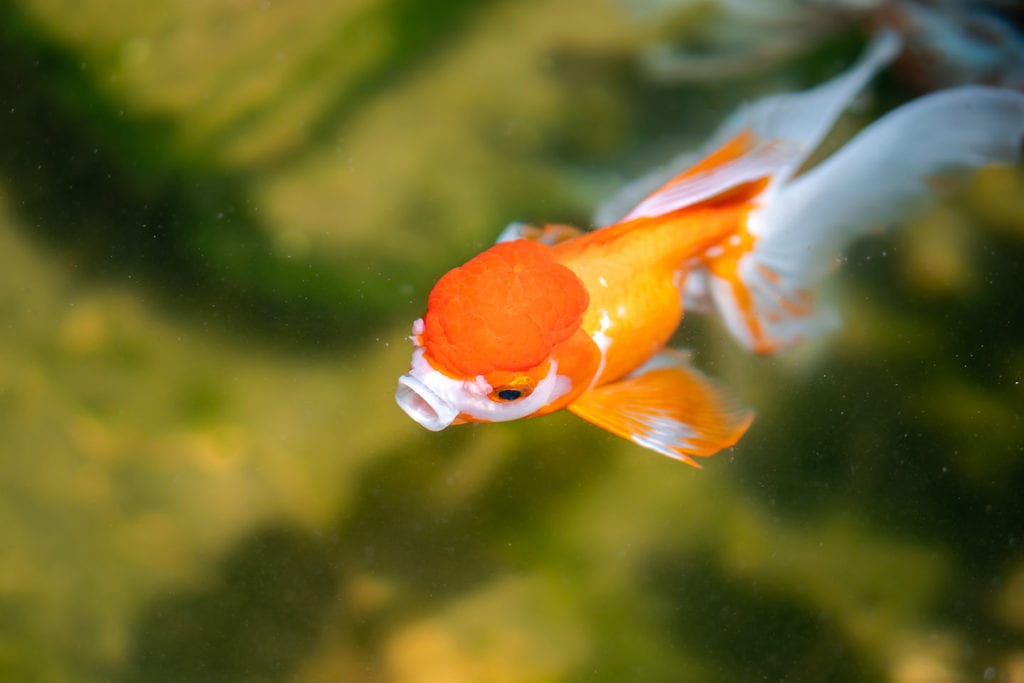
Foraging Is Important
Another problem with feeding just fish food flakes, or even pellets for that matter, is that it doesn’t meet your goldfish’s natural urge to forage and snack throughout the day. In nature, goldfish eat all day long. They eat insects, small crustaceans, and plants. Feeding your goldfish a sprinkle of fish food once or twice a day meets the basic nutritional needs, but it doesn’t allow for the enrichment and nutrition of foraging. This can lead to boredom and often results in goldfish uprooting or eating plants you want to keep.
The Basics of a Goldfish Diet
The base of your goldfish’s diet should be commercial fish food. This will ensure that all basic nutritional needs are met. This can consist of pellets, bars, crisps, flakes, wafers, or gel food. Ideally, a rotation of different foods will help ensure variety and nutritional soundness. Aim for foods that have a protein or plant source as the first few ingredients. Avoid foods with lots of fillers, like corn. Most commercial foods will have some form of filler, so read the ingredients on the label to determine how low on the list the fillers are versus more nutrient-dense foods, like spirulina and shrimp.
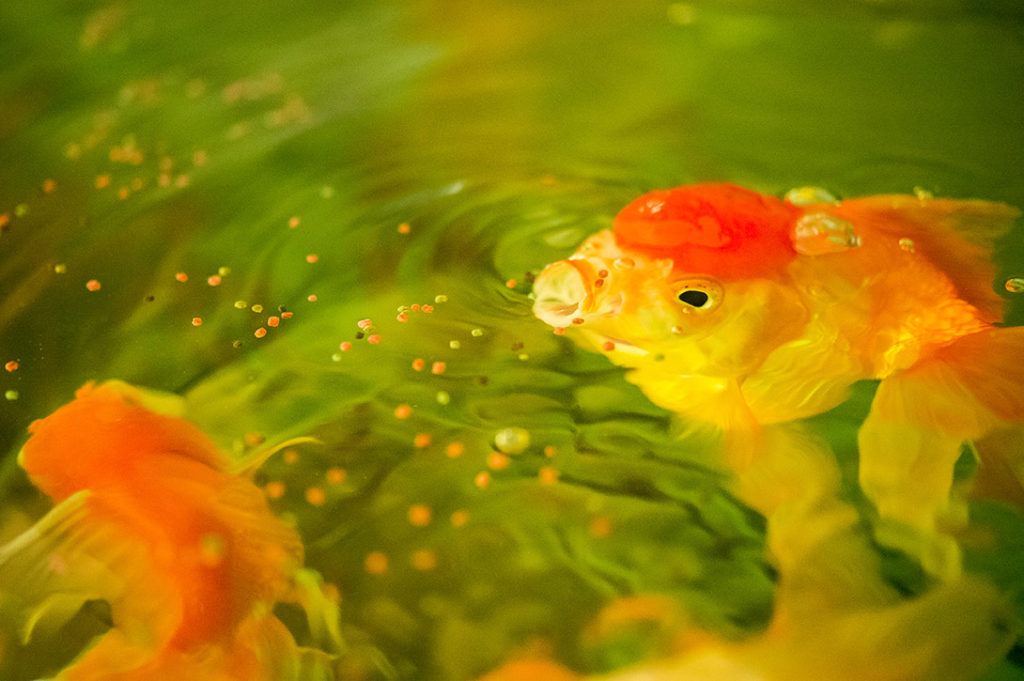
The Necessities
Goldfish should always be provided access to leafy green plants. This will keep them busy and satiated throughout the day. Goldfish aren’t pick with aquatic plants and will eat many of them, although duckweed and water lettuce seem to be favorites.
Many goldfish die as a result of improper feeding, diet, and/or portion sizes – which can be easily prevented by proper education. That's why we recommend the best-selling book, The Truth About Goldfish, which covers everything about goldfish nutrition, tank maintenance, illnesses & more! Check it out on Amazon today.
Here are some “people” foods that you can give your goldfish access to all the time:
Fruit and Veggie Treats
Fruits and veggies not listed above should be fed as treats. They can be fed as a replacement for herbs or leafy greens on an occasional basis but should not make up a main portion of your goldfish’s diet.
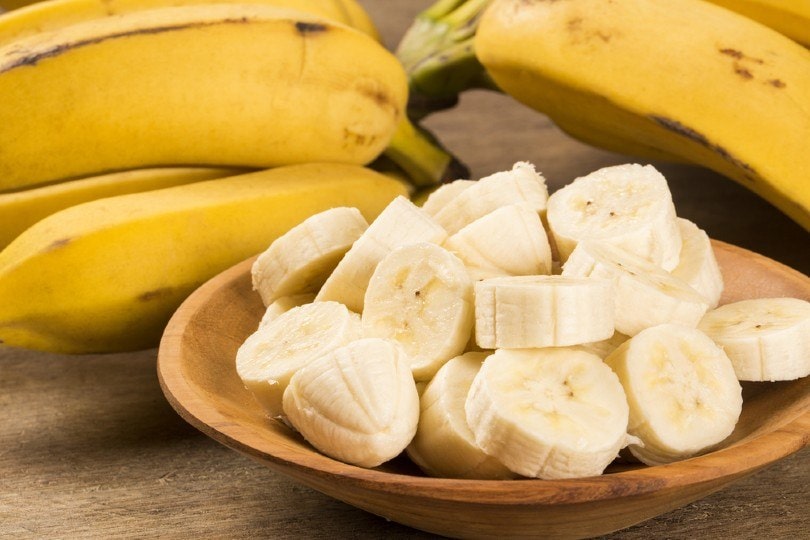
Protein Treats
These treats can mostly be found at pet stores, aquatic stores, and online vendors, although some of these are as close as your backyard. Proteins can cause constipation in large quantities and should be fed sparingly as treats once or twice weekly. Proteins can be freeze-dried, thawed frozen, fresh, or live.
Proceed With Caution
Foods Not to Feed
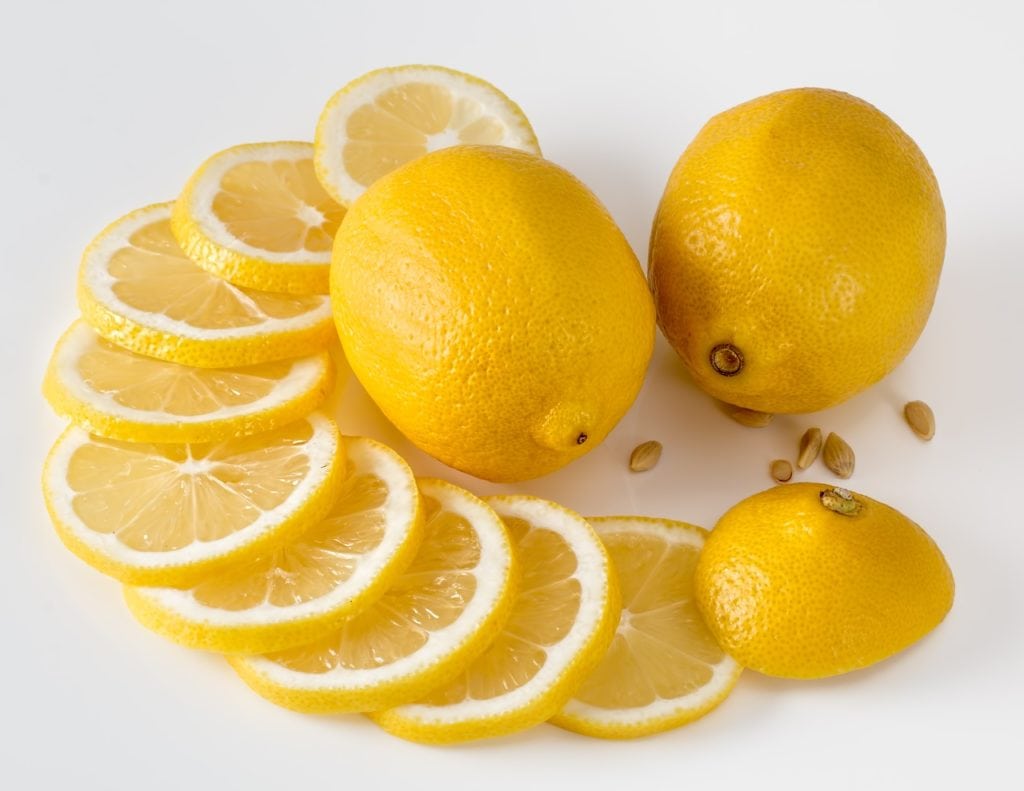
How Do I Feed Fresh Foods to My Goldfish?
When it comes to feeding fresh fruits and veggies to your goldfish, there are a few things to consider. It’s best to steam, blanch, or boil anything before feeding to your goldies. This ensures they can tear, chew, and digest the food. Foods with thin skins, like grapes and peas, should have the skin removed. Foods with thicker skins, like cucumbers and zucchini, should be peeled and seeds should be removed.
Leafy greens, bananas, avocado, and other soft foods can be offered in whole pieces since your goldfish will be able to manage the food. Harder foods or foods that may be difficult to “catch”, like carrots and peas, should be chopped into bite-size or manageable pieces. Food clips and kabob skewers are great options for offering fresh foods to your goldfish.
Conclusion
Offering novel foods to your goldfish can be fun, especially when you find something they particularly like. Keep in mind that goldfish coming from breeding environments have often been raised on commercial fish foods and have not been given access to fresh foods. It may take time for your goldfish to take to eating fresh foods, and this is totally normal. If you were raised on sugary breakfast cereal and hamburgers, then it would take you time to adjust to eating a salad. Be patient and have fun!
- Related read: 5 Best Goldfish Treats – Reviews & Top Picks
Featured Image Credit: oatpost, Shutterstock


